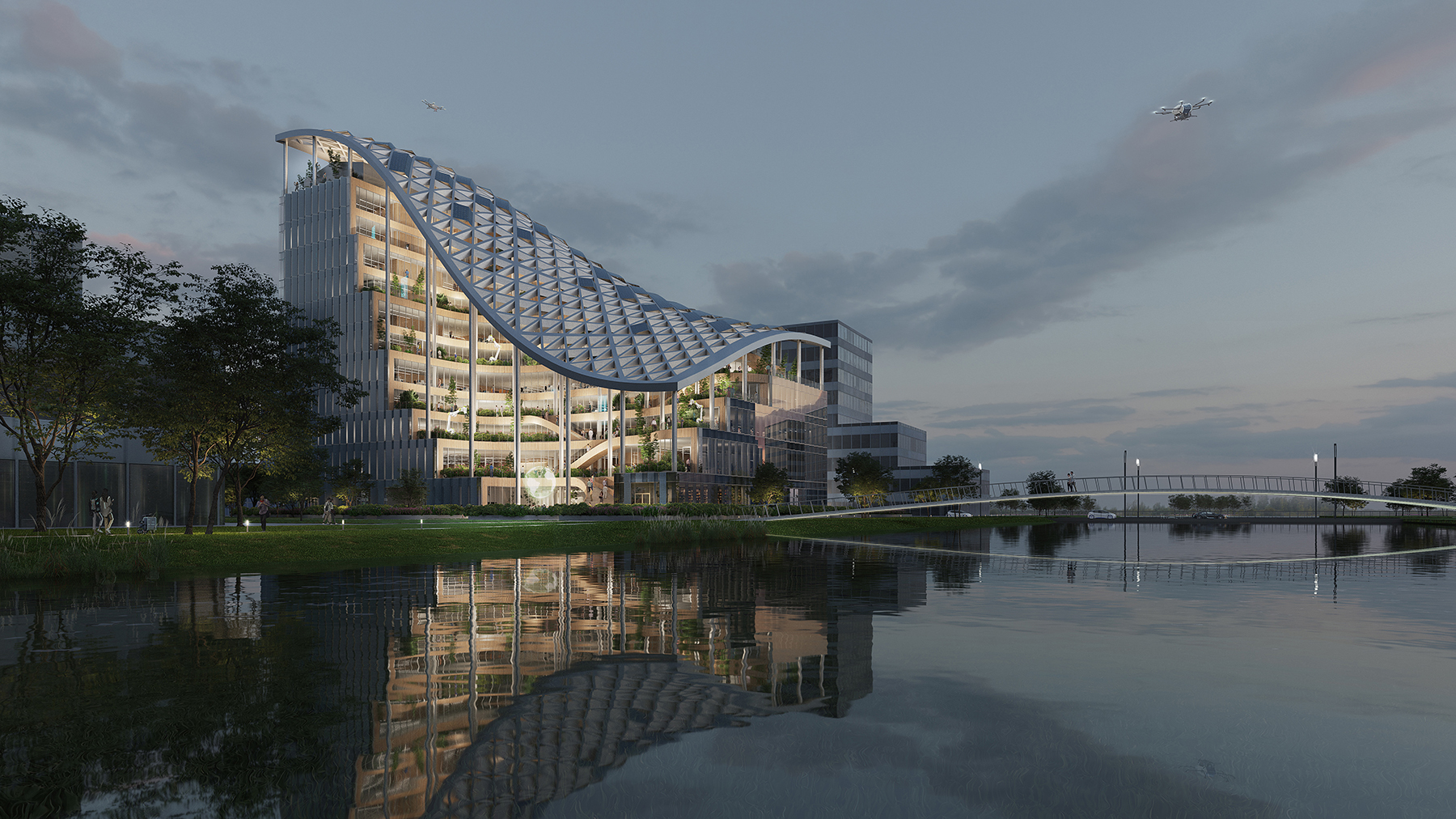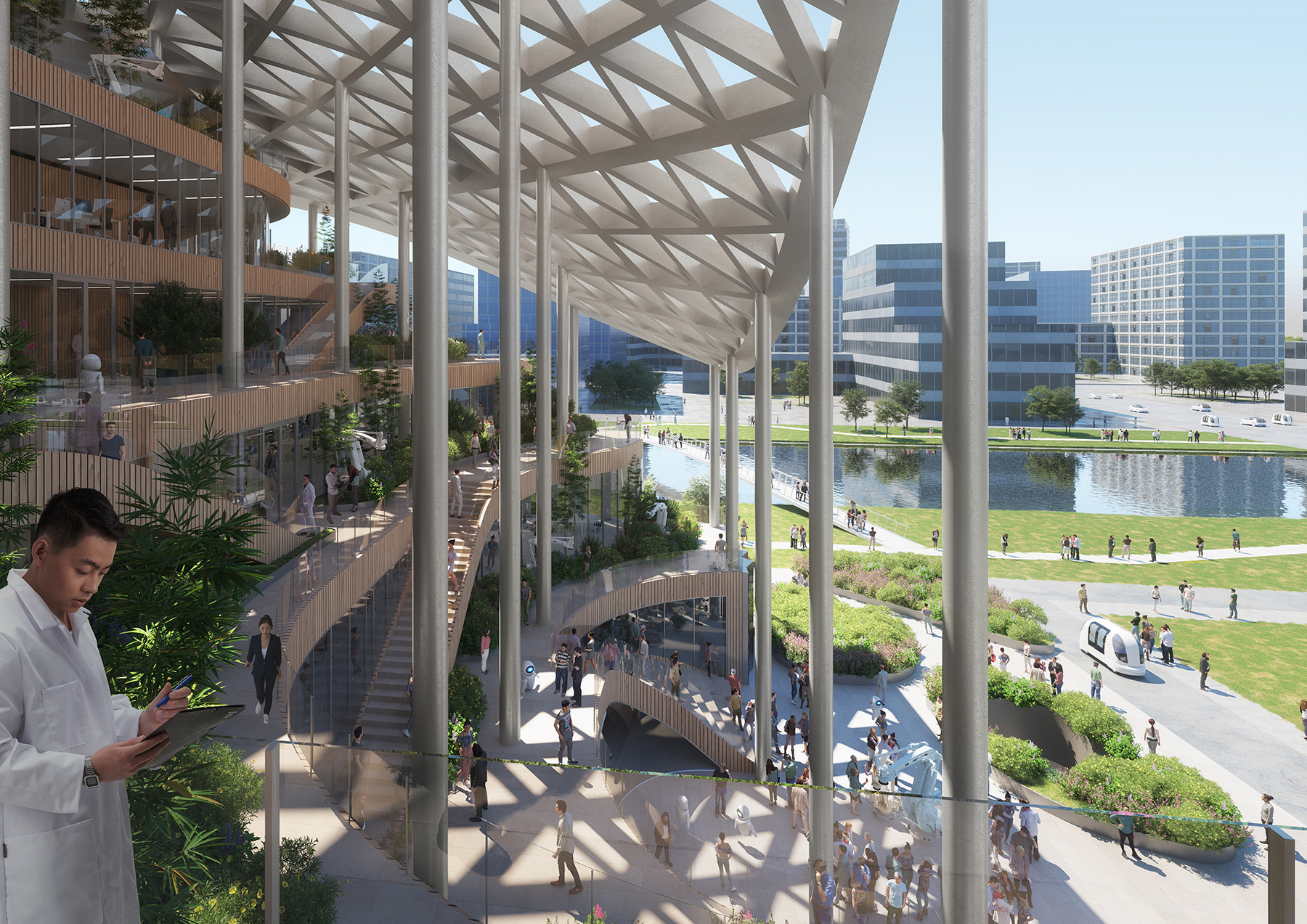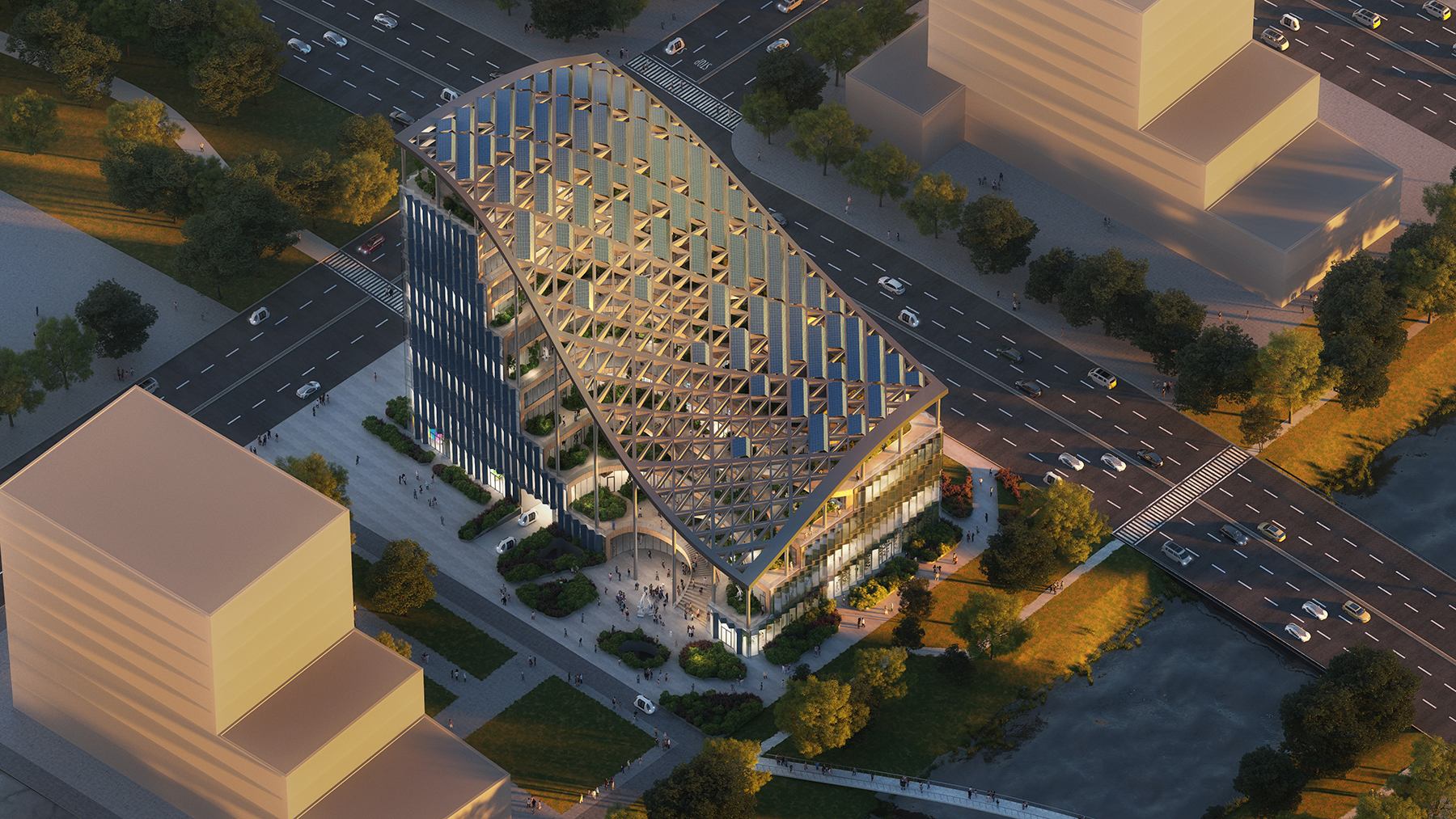An 11-story, terraced office building planned for Shanghai has been designed as a “sustainability machine,” according to the architects, MVRDV of Rotterdam, Netherlands. The designers have integrated high-tech and low-tech solutions to reduce the facility’s energy requirements, earning it this descriptor.

The building is expected to be an agricultural oasis in a rapidly developing area of Shanghai and will be one of China’s smartest, greenest sustainable buildings, according to the architects.
The 18,900 sq m building will serve as the headquarters of Lankuaikei Agriculture Development, an agriculture technology and research firm that works to “empower rural revitalization and food safety in China,” according to LAD’s mission statement. The building will be located near a lake and a park in the Lingang New Town section of Shanghai.
The Shanghai-based East China Architectural Design & Research Institute will be the project’s co-architect and structural engineer. The international engineering firm Buro Happold will be the project’s energy and sustainability consultant.
Sweeping solar roof
MVRDV’s design features a stepped structure — inspired by Chinese terraced rice fields — and a sweeping, curving roof. The southern part of the roof will support solar panels while the northern part will feature an open, permeable design that filters sunlight for shading the terraces beneath. The permeable sections will also allow rainwater to reach the extensively planted vegetation in the wood-clad terraces. Rainwater will also be collected for use in the building’s toilets.

A pleated arrangement of solar panels and glazing on the facade will be angled to help protect the interior spaces from too much heat gain caused by the strong sunlight in the summer while enabling sunlight to reach into the interior in the winter. The building’s southern facade is also designed to act as a noise barrier from the main road that runs past the site.
The roof structure and terraces are expected to promote natural ventilation that, together with the shading design and the use of the solar panels, is expected to reduce the building’s energy requirements sufficiently to make the facility nearly energy neutral. Other factors — including material selection — are expected to reduce the building’s embodied carbon by 40% compared with the construction of comparable structures, MVRDV predicts.

Inside and out
In addition to office space for LAD on the upper levels of the building, the facility will feature laboratories and an adjustable auditorium and exhibition space. Retail outlets will be located on the ground floor around the building’s perimeter. There will be three entrances to the site — one for the LAD offices, a second for rentable office space, and a third for the public from a northward-facing courtyard. The public will also be able to access spaces within the building that showcase LAD technology.
Operable windows and outdoor workspaces will contribute to the building’s sustainable design. A series of voids will enable natural light and fresh air into the site’s two underground levels, which will feature a canteen and parking.



